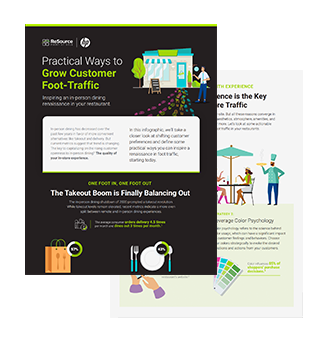Every retail business wants to maximize sales, profit and customer satisfaction. But that can be difficult if you don’t have complete visibility into all the transactions and trends that are happening in your stores every day and from moment to moment.
Ultimately, you need data-driven insights, across all your stores and customers, to truly understand which products are selling, where and how your customers are buying them, and which items should be prioritized for merchandising, promotions, discounts or replenishment.
This kind of data is elusive for many retailers because they’re either not capturing the right data points at the point of sale or the edge of their operations, or they don’t have access to the right analytics and reporting capabilities.
This is why it’s so important to make sure you’re maximizing the capabilities of your point-of-sale software and data capture technologies in your retail operations.
When you use the right point-of-sale software and extend it to the edge of your operations, using the right mobile and tracking technologies, you can automatically capture the right data from each transaction and task you’re performing. In turn, that data becomes easily accessible via reporting and analytics within your point-of-sale software.
Extending Your Point of Sale and Capturing the Right Data
As an example, our team at ReSource Point of Sale works with many retailers to unlock the full tracking and business intelligence capabilities of their point-of-sale software by mobilizing and extending those capabilities to each touch point and task in their operations. Using Zebra touch mobile computers, tablets and kiosks, as well as Zebra barcoding and RFID tracking solutions, we help them automate and optimize all the data collection they need as part of the process.
This way, wherever and whenever a transaction or event takes place, it’s captured in real time in your point-of-sale software, where it’s automatically tracked, quantified and tabulated for reporting and analytics.
For example, as soon as a purchase is made at a checkout lane, self-service kiosk, online, or even at curbside or at a pop-up store, the transaction is logged, and inventory is updated. The specific store, location, customer, price and other key data points are also automatically logged.
Of course, these kinds of transactional insights are pretty basic, but retailers are able to go far beyond these basics. In the back room or warehouse, inventory that’s picked for e-commerce order fulfillment or for store-shelf replenishment is scanned and updated in real time, so there’s always an updated and accurate record of how much of each item is on hand, how much might need to be replenished, and how much is being picked and used for specific stores, customers or sales channels.
When store associates are performing in-aisle mobile checkouts, merchandising tasks or mobile customer service, data for each of these events is captured as well. This includes data on the frequency and dates and times of linebusting or mobile checkouts as well as item-specific or store-specific pricing and promotions, which products associates are helping with, and whether each interaction leads to an in-store or e-commerce order, or an out-of-stock situation and a lost sale.
These are just a few examples of the kind of data collection you can do at the edge of your operations, using your point-of-sale software and the right data capture technologies. There are many more data points and potential ways you can collect them across your operations. But it all adds up to comprehensive data, analytics and reports that you can easily access from within your point-of-sale software, to see real-time trends and activity across any store, channel or touch point.
For example, you can start seeing which items are selling better and more popular at specific stores, so you can start ordering and replenishing inventory and adjusting your merchandising and even in-store product placement accordingly. You can also see which items are trending downward at specific stores, so you can start reducing stock levels or targeting new pricing or promotions for customers who shop at those stores.
Speaking of customers, you can start getting a better picture of customer behavior and buying habits by viewing customer analytics by geography, stores, items, date ranges, in-store versus online purchases, traditional checkouts versus self-service, coupon and loyalty program usage, and much more.
Implementing the Right Data Capture and Analytics in Your Operations
Getting to the right business intelligence and analytics starts by making sure you’re getting the most out of your point of sale, extending and expanding its capabilities, and making sure you’re collecting the right data. If your current software or data capture technologies aren’t sufficient, there are ways you can complement them, upgrade them or even replace your current systems, so you can start getting the true visibility you need, with automated and optimized processes along the way.
At ReSource POS, we help retailers do this every day, with expert consulting, strategies and solutions to maximize the business intelligence and analytics capabilities of their current point-of-sale software and systems, or by making strategic and cost-effective upgrades to get to where they need to be.
To learn more about the possibilities and how to start using your point of sale to capture all the business intelligence you need, connect with us now and schedule a free consultation at your convenience. We’d be happy to learn more about your retail business and goals, and to recommend the best strategies and steps to turn your point of sale into a business intelligence machine.

